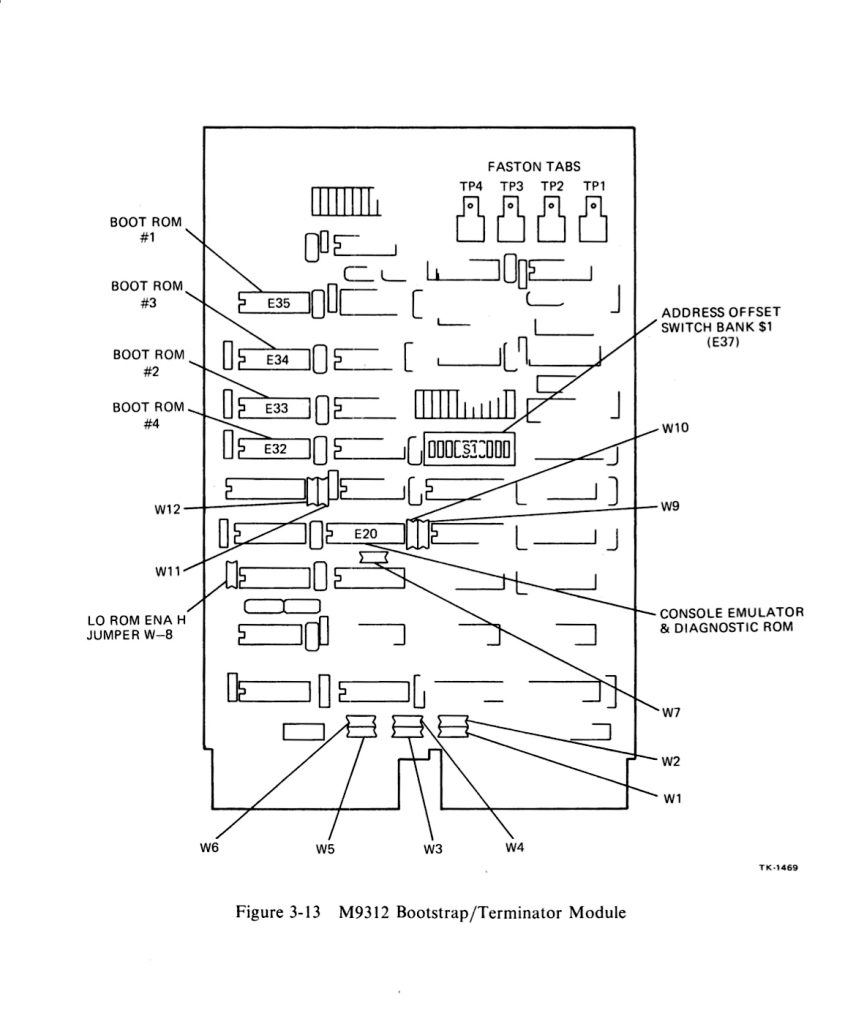Booting a PDP-11 is something that I have maybe overlooked a bit, in trying to approach the ‘real thing’. In the history of PDP2011, it’s not that long ago really that I added the M9312 boot roms option – and I really still prefer my own boot code. Partly because PDP2011 can be different models with different peripherals according to the configuration, and my own boot code shows what has been configured. Easy to keep track of what kind of system is in an FPGA that way. And also faster.
However, the M9312 boot roms and the monitor included in them have certainly proved their value. For one, the monitor works with Jörg Hoppe’s PDP11GUI, allowing loading and dumping of memory and disks – which, if nothing else, opens up the possibility of easily copying disk images to and from a PDP2011 system, other than physically removing SD cards – to the point that I’m now actually considering other flash memory media besides SD cards. For instance because those other flash media could potentially be lots cheaper. Very interesting for designing a shim board for connecting to Oscar Vermeulen’s console, potentially adding a couple low cost flash components for the disks instead of the SD card connectors…
And that brings me to the subject that’s been on my mind. Because Oscar’s console is very definitely an 11/70, and 11/70 is one of the models of PDP11 that had a very specific different way of booting – even if it had the same regular M9312 in it, there was a specific boot rom for it, with its specific tests, without the monitor, and with a specific method of booting.
In general, PDP11 hardware would ‘boot’ using the power fail trap vector 024, and 11/70 follows this pattern. The M9312 would then detect the boot, and during the memory cycles to fetch the trap vector and PS the M9312 would ‘wire-or’ the values set on its micro switches to make the processor load the vector from its boot roms – one bigger 512 word rom for diagnostics and the monitor, or in case of the 11/70 for diagnostics only; and 4 smaller 128 word roms for booting from many different peripherals – at least 20 different types of disks supported by DEC alone, but also magnetic tape units, paper tape readers, punch card readers, and network cards – serial and Ethernet. So the most important thing about booting for an 11/70 administrator would be to choose the device boot roms, and set the switches (the ‘address offset switch bank $1’) on the M9312 card to the preferred boot medium – or to the diagnostics.

The switches on the M9312 card could be used to make the cpu to start the boot code in one of the small roms directly – most likely booting your preferred operating system from one of the hard disks. But you could also set it to start at the diagnostics code in the lower rom, and then use the console switches to determine to which location in the smaller device specific boot roms to jump.

And that’s what I’ve been thinking about – how to do that for PDP2011. With Oscar’s console, it is obviously possible to let the system boot in the 11/70 console style, have it run the specific 11/70 rom with its diagnostics, and then boot from one of the roms according to the setting on the console switches. But… well, I’m not sure what that would add. Booting the fpga PDP11 isn’t really going to be ‘really’ the same as the ‘real thing’, ever – for one, the power fail vector doesn’t really make sense like it did in the days of core memory. Nor can an fpga do wired or – sure I can work my way around that with another multiplexer implied from another if statement in the code, but it’d seem a bit awkward, and especially in the address calculation, I can really miss another layer of complexity. It wouldn’t make the system run any faster, that’s for sure.
So, what is on my mind is that while it isn’t really the way that a ‘real’ 11/70 would boot, the M9312 monitor is actually probably better in terms of flexibility and user friendliness. And for those that would rather directly boot from a specific device without bothering with console interaction, it’s fairly easy to do so by reconfiguring the start address in the PDP2011 code – basically, today’s equivalent of setting switches on the M9312 card. And, well, obviously it would be possible to add physical switches on a shim card, or use switches that are on the fpga board, or some combination – but on the target board that I’m working on now, the de0nano, there aren’t enough switches and I’d rather use them for something else probably.
In short, I’m a bit hesitant to add the special /70 boot rom – I’m not saying that I never will, but I think the monitor rom is far easier and more flexible to use, and for fixed setups the old style pdp2011 roms will probably work better, maybe in combination with a changed start address in the top source file. If I’m going to add it, it’ll probably not be the default. That should be the monitor, I think.